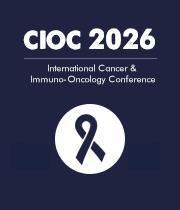Title : Efficient anticancer properties of ashwagandha extracted phytochemicals for lower protein expression on U-251 and clove extracts on LN-229 GBM cell lines
Abstract:
Glioblastoma Multiforme G IV primary malignant Brain tumor medications such as Radiation, Surgery, Gene therapy, Chemotherapy and Ayurveda which are not very much successful with clinical studies. However, the trials are being made towards the various cancers’ successful treatment with less side effects. Hence natural phytochemicals extract of Ashwagandha (Withania somnifera) Soya bean (Glycine max) and Clove (Syzygium aromaticum) are also considered for cancer therapeutics having much side effects on Human brain cells and organs.
The Phytochemicals treated GBM cell lines U251 and LN229 subjected for MTT assay, SDS gel electrophoresis, Protein content determination by Lowry and Bradford assays.
The Ashwagandha extracted phytochemicals such as Alkaloids, tannins, saponins, phlobatannins, Flavonoids, Terpenoids were determined. Ashwagandha phytochemicals extract treated U251 cells showed IC50-1.1 µg/100 µl and 83.95% cell death for the same concentration.
The LN 229 Cell viability reduced to 40% with clove phytochemicals and cinnamaldehyde.
The protein content reduced to 118.68µg/ml for 138µl/ml Ashwagandha phytochemicals as compared to control protein 257.25 µg/ml. Whereas, less protein band intensity displayed for phytochemicals of Ashwagandha, treated U251 cells and less protein expressed for cinnamaldehyde and clove extract phytochemicals treated LN229 cells respectively when compared to their control.
Therefore, GBM U251 and LN 229 cells treated with Phytochemicals of Ashwagandha and clove showed reduction in protein expression directly depicts tumor cell death that acts as anticancer drug conjugate.
Key words: GBM Cells; U 251; LN229; Phytochemicals; Protein expression; Tumor cell death.



